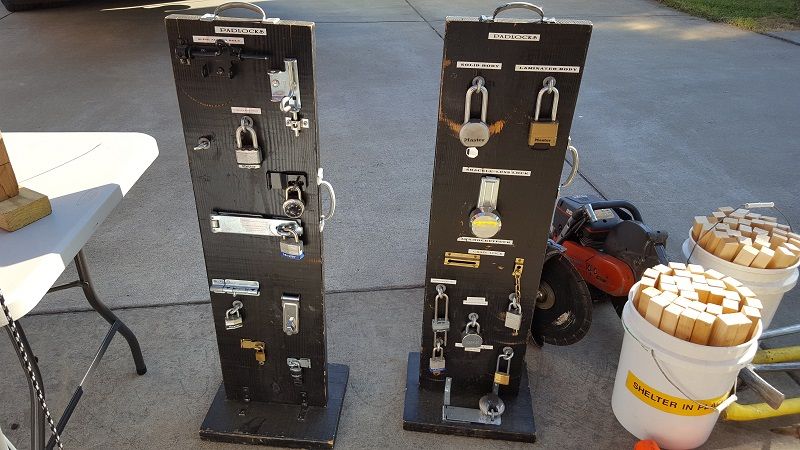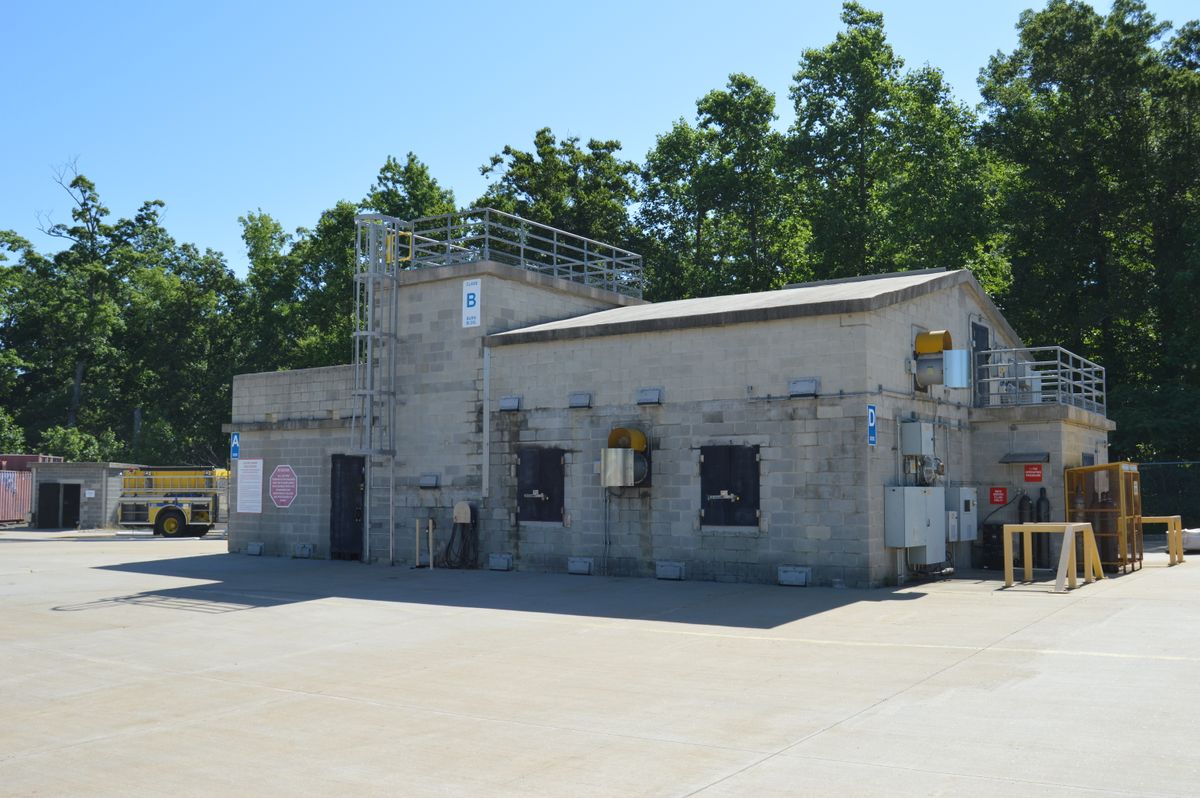Fire training props. Or fire training simulators.
Regardless of what we call them, out-of-classroom training simulators, like live burn buildings or search and rescue mazes, are important tools for developing safe, effective and efficient firefighters.
So, how should a fire department get the training simulators it needs to do that job? Make them in-house or purchase them?
Most firefighters think of NFPA 1403, Standard on Live Fire Training Evolutions, as it pertains to live fire training in acquired structures like abandoned or condemned homes or businesses. But NFPA 1403 also contains a wealth of information relative to any fire department training that employs the use of training simulators, particularly in these sections:
- Chapter 4 — General
- Chapter 8 — Exterior Live Fire Training Props
- Annex A — Explanatory Material
- Annex C — Responsibilities of Personnel
- Annex D — Heat Exhaustion and Heat Stroke in Training
Before building your own fire training simulators
Every good project should start with a needs assessment to determine what training simulators your department needs based upon the tactical operations your firefighters typically do. Your department, like most fire departments, is not likely flush with cash for training simulators so you want to get the most training from the simulators you build or purchase.
Talk to your neighboring departments to see what they have and what they need. Collaboration and resource sharing can be mutually beneficial, especially if the training simulators are mobile. And don’t forget to find out what training simulators are available from regional or state fire training organizations.
For example, the West Virginia University Fire Extension Services has a fleet of mobile training simulators that includes: a live fire training simulator, a confined space rescue simulator and an automobile fire simulator.
Those simulators get a great deal of use, both on campus at the West Virginia Fire Academy, and supporting local and regional fire schools across the state.
Class B live burn simulator that uses only propane-fueled props inside the building. (Photo/Chesterfield (Va.) Fire and EMS Department)
Determine how much money your department has available to put into building or purchasing a simulator. Even in-house DIY projects cost money for materials and possibly labor costs. And don’t forget to include projected maintenance costs to keep your training simulator in a safe operating condition. Costs for paint, replacement panels or parts add up quickly.
DIY projects need a designer, general contractor and builders. Do the personnel in your department have the design and construction skills to construct the desired simulator? Are there other resources available in your community? Will those folks, in-house or from the community, have the available time to construct a simulator in the timeframe that fits your needs?
Online resources
An Internet search for “firefighter training props plans” revealed a wealth of information, especially in the form of videos, being shared by fire departments that have designed and built their own training simulators with in-house resources.
In looking over some of these DIY training simulators, I was struck by the level of innovation and creativity on the part of the fire departments who built them. While there were the usual types of training simulators – SCBA mazes, forcible entry and rooftop ventilation – there were also a number that addressed specific types of hazards or operations indigenous to a particular fire department. Response area specific props are one of the pluses for a department building their own training simulators.
Training simulators that a fire department should purchase
The NFPA 1403 requirements for structural firefighting burn buildings are quickly making burn buildings consisting of unprotected concrete walls, with fires burning only Class A combustibles, a thing of the past. The new generation of structural firefighting simulators – burn buildings – are designed and engineered to reduce many of the risks while maintaining the training and development benefits.
Our awareness of the linkage between smoke exposure and cancer in firefighters is rapidly increasing. It’s imperative that we discontinue needlessly exposing firefighters and instructors to the toxic materials and carcinogens contained in the smoke and soot produced by the burning of Class A materials.
Research is also showing us that needlessly exposing students and instructors to high interior temperatures during live fire training has physiological consequences as well. Instructors typically work inside the burn building or modular burn unit two or three times more often during a training session than the students, so reducing their exposure to both smoke and heat is in their best interests.
Class A live burn simulator that uses on Class A fuel (straw and wooden pallets). The class A building opened for training in April 2007. (Photo/Chesterfield (Va.) Fire and EMS Department)
A fixed facility live burn building, that’s properly designed, engineered and constructed in compliance with NFPA 1403 requirements provides a fire department with a safer, more effective and more efficient training simulator. Features that make that possible include:
- Thermal protection for structural components, provided by heat-resistant tiles, help maintain structural integrity and extend the life of the building.
- Configurable interior spaces with moveable walls and partitions so that instructors can change the layout of those spaces to better support particular training objectives.
- Individual fire simulators for kitchen or bedroom configurations with temperature sensors that extinguish the fire after firefighters have applied the proper fire flow to the target for the required amount of time.
- Handheld computerized remote controls that enable instructors to manage simulator features from the simulator’s interior or exterior.
- Temperature sensors that initiate an automatic system shut-down if temperatures exceed operational guidelines.
The management of live fire training sessions with a simulator is greatly improved because there is less downtime between burns and students get more fire scenarios per hour. Also instructors do not use valuable training time removing wet and unburned Class A materials or restocking fire cribs with new Class A material.
New live burn simulators are also more environmentally-friendly since they can be designed to use propane or natural gas for fuel. This eliminates the smoke and soot produced by the burning of Class A materials, as well as the problem of dealing with the contaminated water those results from extinguishing Class A fires.
Logistics can be reduced, if a department chooses to use only natural gas or propane as a fuel, as there is no need to stockpile Class A materials for burning prior to the training session. Those materials also do not have to be moved into the burn building.

Educational display of different types of locking devices firefighters might encounter shared during the WV Junior Firefighter Camp. (Photo/Deputy Chief Steve Alley, Ashland (Ky.) Fire Department)
Other fire training simulators
The discussion about live fire training simulators usually starts with structural firefighting simulators, however the variety of exterior fire training simulators now available on the market address many other response scenarios, such as:
- Vehicle fire simulators that have the same features as burn building.
- Hazardous materials simulators that present multiple types of liquid and gas leaks for fighters to control.
- Flammable liquid spill simulators where propane or natural gas flows up from under steel mesh pads to simulate an open flammable liquid spill fire.
Mobile fire training simulators are commercially available. These towable units can enable fire departments in a region to share the simulator, as well as the initial cost and on-going maintenance costs. These modular units include structural firefighting simulators as well as vehicle and hazmat simulators.
Fire departments looking to acquire a live fire training simulator – whether it’s a structural firefighting burn building or a vehicle fire simulator – should work with a reputable manufacturer after the department determines its needs.
Do your homework before any purchase by evaluating the products from several manufacturers, talking to other fire departments who’ve purchased a fire training simulator like the one you’re considering and seeing a video or live demonstration of the training simulator in action.















